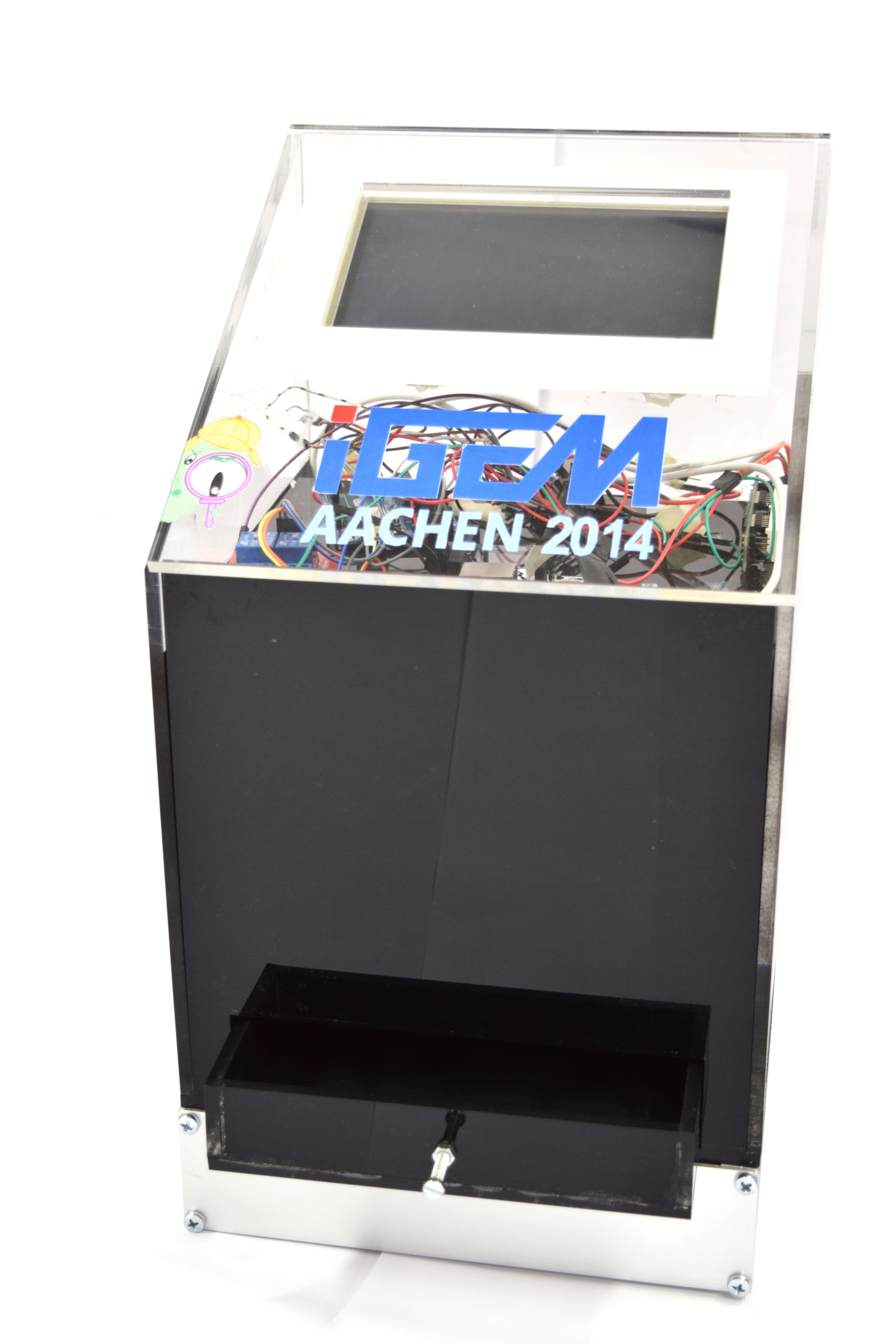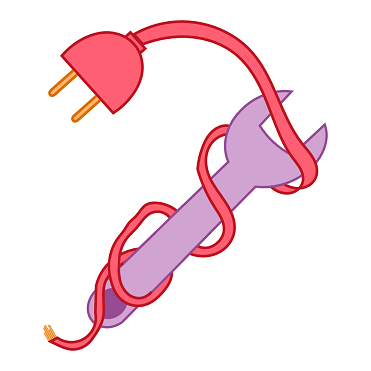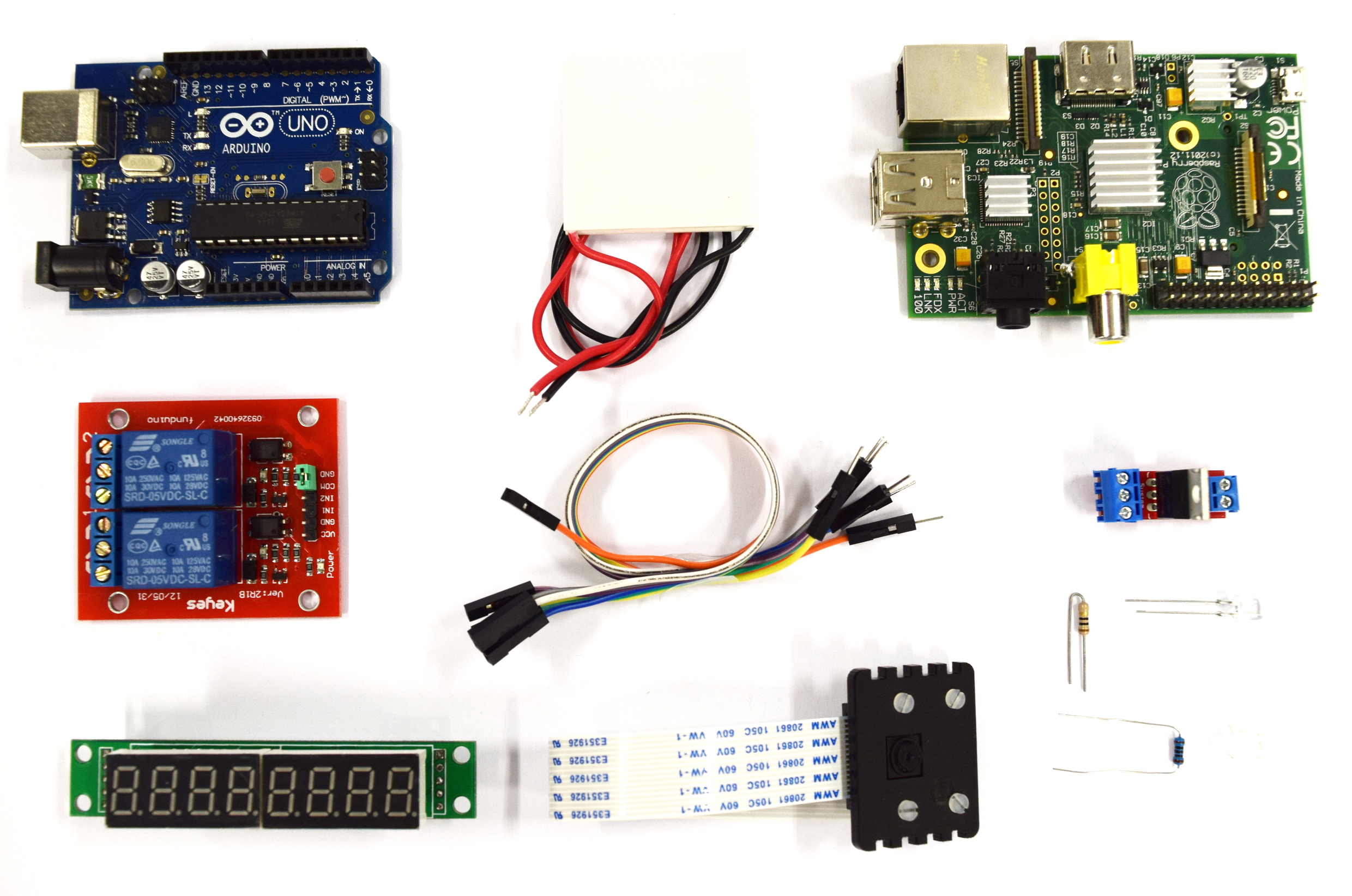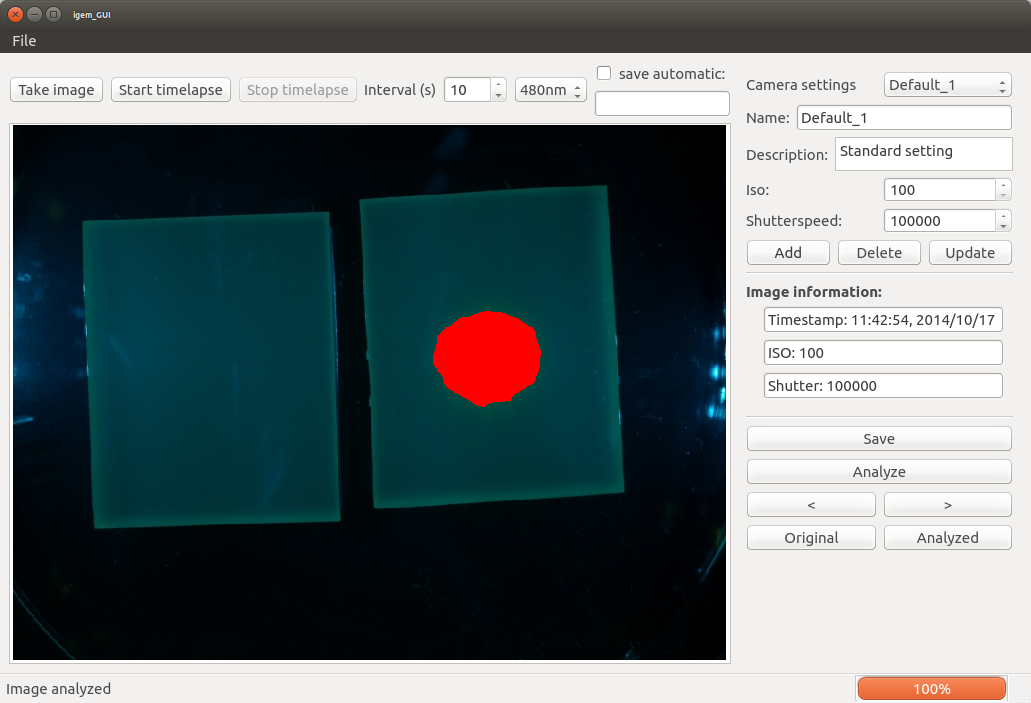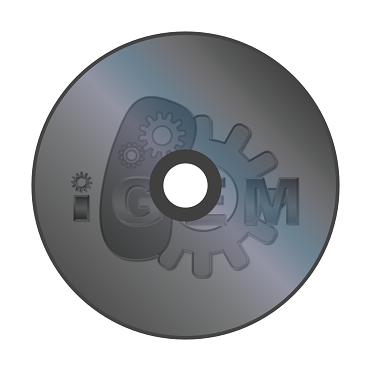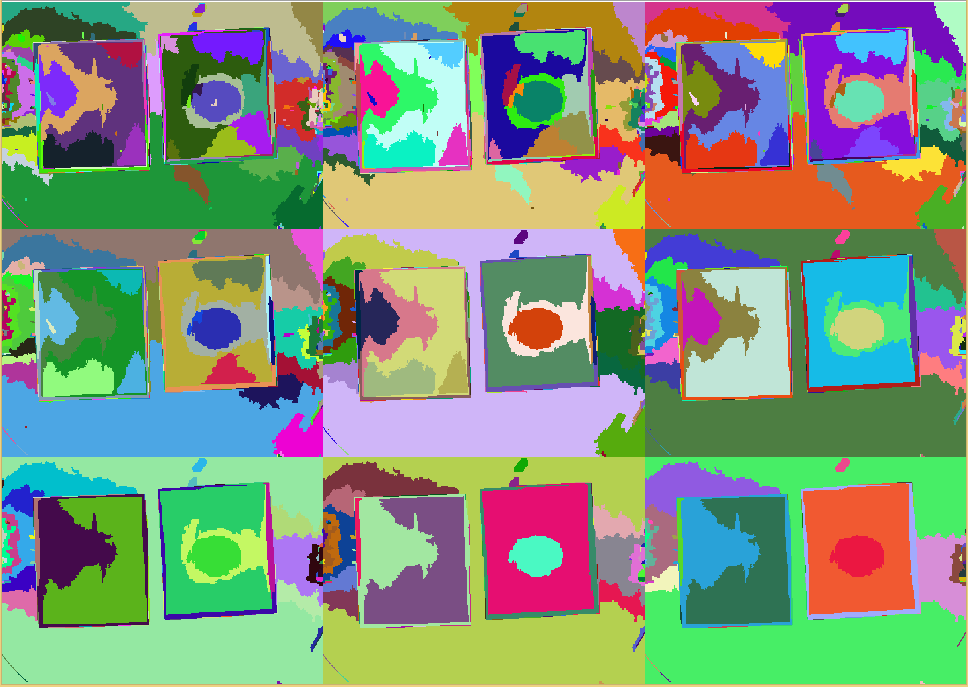Team:Aachen/Project/Measurement Device
From 2014.igem.org
(→Achievements) |
|||
| Line 5: | Line 5: | ||
= ''WatsOn'' = | = ''WatsOn'' = | ||
| - | {{Team:Aachen/FigureFloatRight|Aachen_Device_11.jpg|title=WatsOn|subtitle= |width=270px}} | + | {{Team:Aachen/FigureFloatRight|Aachen_Device_11.jpg|title=''WatsOn''|subtitle= |width=270px}} |
<html><br></html> | <html><br></html> | ||
The ''WatsOn'' device aims to answer the central question "What's on the chip?". The device is designed to incubate the sensing cells and capture images. <html><br></html>The interactive ''WatsOn'' software enables the end user not only to take images and time lapse shootings, but also analyzes the images and visualizes the presence/absence of a pathogen. | The ''WatsOn'' device aims to answer the central question "What's on the chip?". The device is designed to incubate the sensing cells and capture images. <html><br></html>The interactive ''WatsOn'' software enables the end user not only to take images and time lapse shootings, but also analyzes the images and visualizes the presence/absence of a pathogen. | ||
| Line 60: | Line 60: | ||
</center> | </center> | ||
</html> | </html> | ||
| + | |||
{{Team:Aachen/BlockSeparator}} | {{Team:Aachen/BlockSeparator}} | ||
| Line 67: | Line 68: | ||
{{Team:Aachen/Figure|How_two_use_watsOn_flowsheet_V7_ipo.png|title=How to use ''WatsOn''|subtitle=This scheme illustrates handling WatsOn when testing the 2D biosensor chip for a fluorescent signal.|width=1000px}} | {{Team:Aachen/Figure|How_two_use_watsOn_flowsheet_V7_ipo.png|title=How to use ''WatsOn''|subtitle=This scheme illustrates handling WatsOn when testing the 2D biosensor chip for a fluorescent signal.|width=1000px}} | ||
| + | |||
{{Team:Aachen/BlockSeparator}} | {{Team:Aachen/BlockSeparator}} | ||
| Line 81: | Line 83: | ||
The electronic circuit is a combination of the components displayed in the image above. We combined the Raspberry Pi - a small single-board computer running a Linux operating system - and an Arduino board which is a programmable microcontroller. The Arduino operates the excitation LEDs and a Peltier heater for incubation. For taking images of the sensor chips we used the Raspberry Pi camera module which is directly connected to the board. | The electronic circuit is a combination of the components displayed in the image above. We combined the Raspberry Pi - a small single-board computer running a Linux operating system - and an Arduino board which is a programmable microcontroller. The Arduino operates the excitation LEDs and a Peltier heater for incubation. For taking images of the sensor chips we used the Raspberry Pi camera module which is directly connected to the board. | ||
| - | WatsOn is designed such that it can be easily copied. Our work heavily emphasizes the Open Source concept. Therefore a detailed description of all components and the wiring can be found in the [https://2014.igem.org/Team:Aachen/Notebook/Engineering/WatsOn#watsonhardware Engineering section of our Notebook]. | + | ''WatsOn'' is designed such that it can be easily copied. Our work heavily emphasizes the Open Source concept. Therefore a detailed description of all components and the wiring can be found in the [https://2014.igem.org/Team:Aachen/Notebook/Engineering/WatsOn#watsonhardware Engineering section of our Notebook]. |
| + | |||
{{Team:Aachen/BlockSeparator}} | {{Team:Aachen/BlockSeparator}} | ||
| Line 95: | Line 98: | ||
The GUI (left image) provides the user with the option to take a single image or a time lapse shooting and specify parameters for the camera and the wavelength of the LEDs. The wavelength used in our device are 480nm for GFP and 450nm for iLOV. Furthermore, the images are analysed for the presence or absence of P. aeruginosa by analysing the image and providing the user with a visual feedback (right image). All taken images can be saved to disk manually for single images and automatically for time lapse shootings.<html><br/></html> | The GUI (left image) provides the user with the option to take a single image or a time lapse shooting and specify parameters for the camera and the wavelength of the LEDs. The wavelength used in our device are 480nm for GFP and 450nm for iLOV. Furthermore, the images are analysed for the presence or absence of P. aeruginosa by analysing the image and providing the user with a visual feedback (right image). All taken images can be saved to disk manually for single images and automatically for time lapse shootings.<html><br/></html> | ||
Further details on the software including the backend which gives the possibility of using the GUI remotely on a different device (e.g. notebook) in the same local network can be found here [https://2014.igem.org/Team:Aachen/Notebook/Engineering/WatsOn#watsonsoftware]. | Further details on the software including the backend which gives the possibility of using the GUI remotely on a different device (e.g. notebook) in the same local network can be found here [https://2014.igem.org/Team:Aachen/Notebook/Engineering/WatsOn#watsonsoftware]. | ||
| + | |||
{{Team:Aachen/BlockSeparator}} | {{Team:Aachen/BlockSeparator}} | ||
| Line 100: | Line 104: | ||
[[File:Aachen_14-10-16_Measurarty_button_iNB.png|right|150px]] | [[File:Aachen_14-10-16_Measurarty_button_iNB.png|right|150px]] | ||
| - | == Measurarty == | + | == ''Measurarty'' == |
<span class="anchor" id="watsonmeasurarty"></span> | <span class="anchor" id="watsonmeasurarty"></span> | ||
<center> | <center> | ||
| Line 106: | Line 110: | ||
</center> | </center> | ||
| - | Measurarty is the '''image analysis software''' of our device and is designed to allow an automatic segmentation and classification of our '''agar chip pictures'''. | + | ''Measurarty'' is the '''image analysis software''' of our device and is designed to allow an automatic segmentation and classification of our '''agar chip pictures'''. |
| - | Therefore, it accepts an image from WatsOn as an input and produces an output image with pathogenic regions marked in red. | + | Therefore, it accepts an image from ''WatsOn'' as an input and produces an output image with pathogenic regions marked in red. |
This component mainly focuses on recognizing pathogens early, such that pure thresholding is not necessary. | This component mainly focuses on recognizing pathogens early, such that pure thresholding is not necessary. | ||
| Line 114: | Line 118: | ||
A sample output of the segmentation is presented below, showing that the pipeline works as intended. | A sample output of the segmentation is presented below, showing that the pipeline works as intended. | ||
| - | {{Team:Aachen/FigureDual|Aachen_K131026_Pseudomonas_aeruginosa_detection.gif|Aachen_Pseudomonas_aeruginosa_Measurarty_slower.gif|title1=Detection of ''Pseudomonas aeruginosa'' with K131026|title2=Optimized detection of ''Pseudomonas aeruginosa"" using Measurarty|subtitle1=Direct detection of ''Pseudomonas aeruginosa'' on sensor chips. Sensor cells used were K131026.|subtitle2=Measurarty is able to reliably identify the fluorescence response of the sensor cells which is produced in a response to ''Pseudomonas aeruginosa''.|width=480px}} | + | {{Team:Aachen/FigureDual|Aachen_K131026_Pseudomonas_aeruginosa_detection.gif|Aachen_Pseudomonas_aeruginosa_Measurarty_slower.gif|title1=Detection of ''Pseudomonas aeruginosa'' with K131026|title2=Optimized detection of ''Pseudomonas aeruginosa"" using ''Measurarty''|subtitle1=Direct detection of ''Pseudomonas aeruginosa'' on sensor chips. Sensor cells used were K131026.|subtitle2=''Measurarty'' is able to reliably identify the fluorescence response of the sensor cells which is produced in a response to ''Pseudomonas aeruginosa''.|width=480px}} |
| + | |||
| + | |||
{{Team:Aachen/BlockSeparator}} | {{Team:Aachen/BlockSeparator}} | ||
| Line 132: | Line 138: | ||
*is portable and fast in analyzing the images | *is portable and fast in analyzing the images | ||
| - | With our final device we achieved all of the above mentioned goal. WatsOn is housed in a closed casing and is able to take images and time lapse shooting using LEDs with required wavelengths, analyze the image and visualize the result. | + | With our final device we achieved all of the above mentioned goal. ''WatsOn'' is housed in a closed casing and is able to take images and time lapse shooting using LEDs with required wavelengths, analyze the image and visualize the result. |
All technical details including laser cutting plans, the list of needed components, source codes for the different software and a building instruction are open-source and available on our wiki[https://2014.igem.org/Team:Aachen/Notebook/Engineering/WatsOn]. | All technical details including laser cutting plans, the list of needed components, source codes for the different software and a building instruction are open-source and available on our wiki[https://2014.igem.org/Team:Aachen/Notebook/Engineering/WatsOn]. | ||
Revision as of 18:26, 17 October 2014
|
|
|
|
|
|
 "
"
